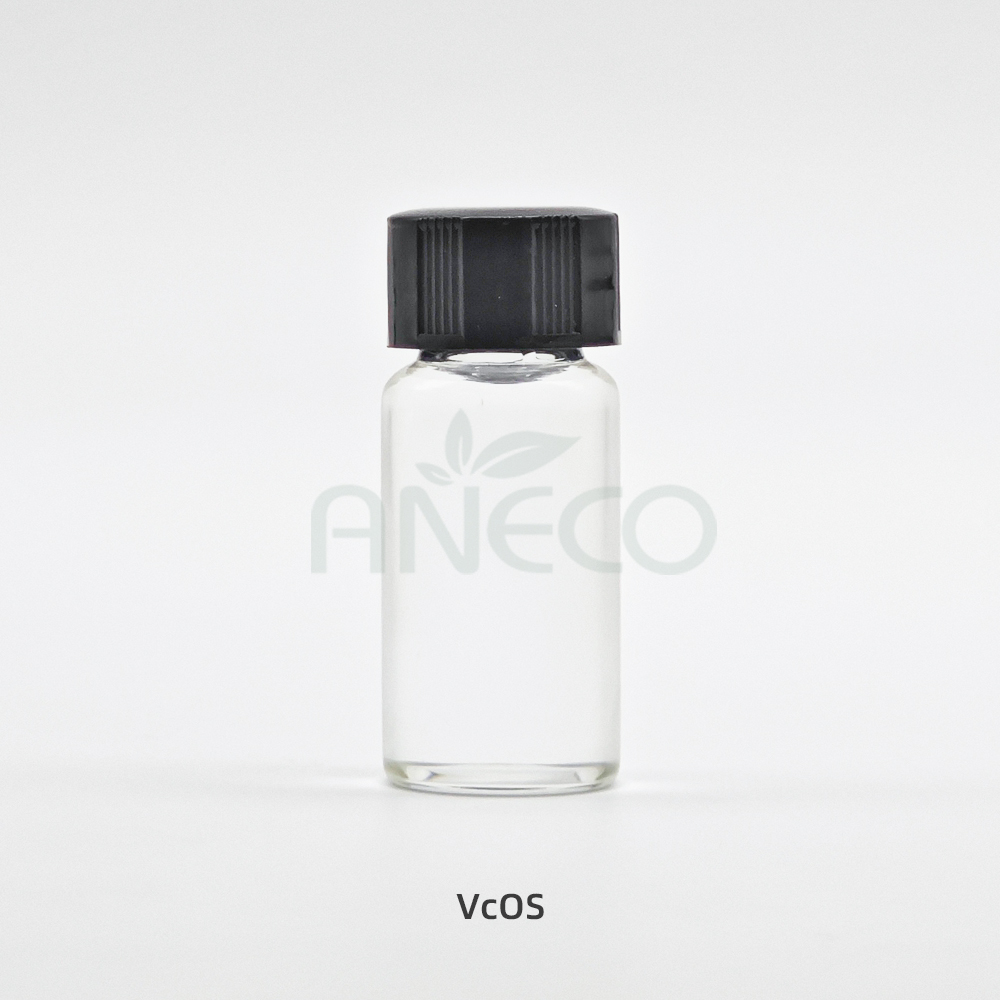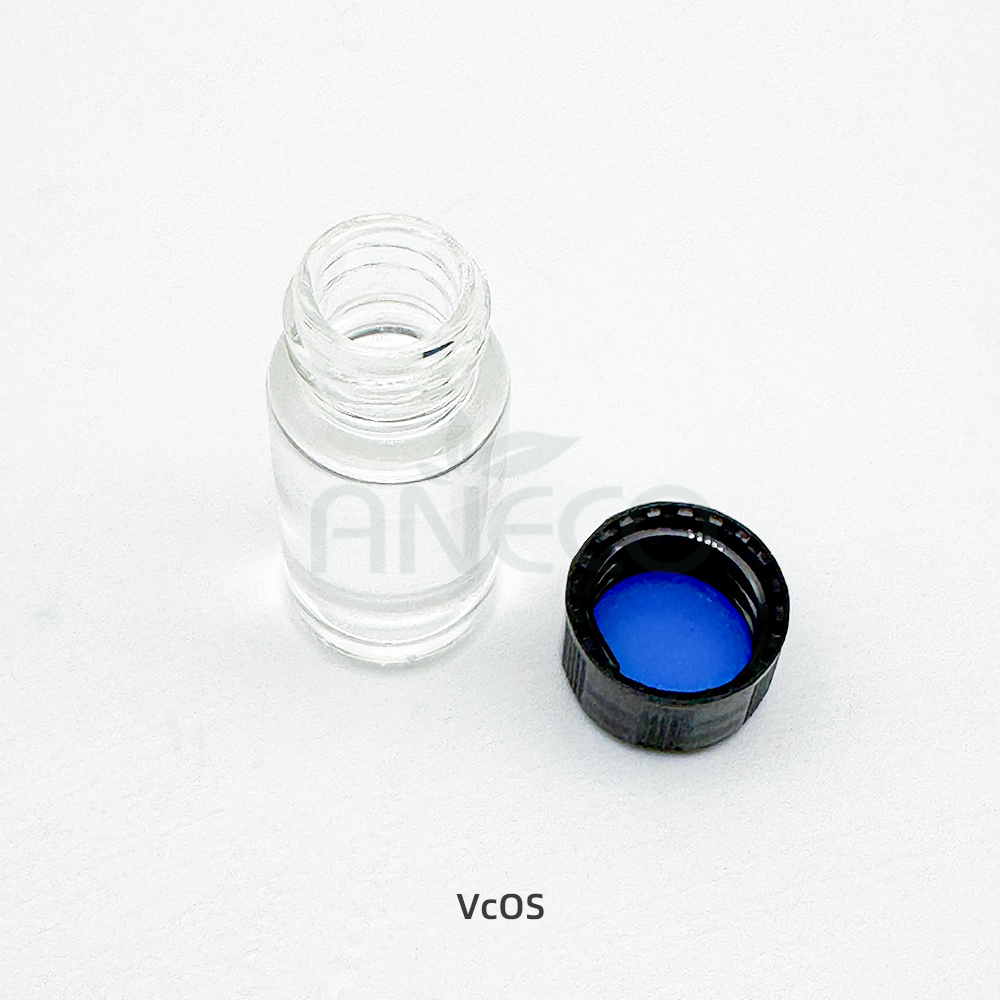




VcOS
VcOS is a stable, oil-soluble Vitamin C derivative. It is stable against heat and light and is lipid-soluble, easy to use for cosmetics. It exhibits excellent percutaneous absorption and effectively converts into free Vitamin C in the skin to perform various physiological functions.

REQUEST A SAMPLE
BACKGROUND

Vitamin C has many functions as a cosmetic ingredient, including skin lightening, promoting collagen synthesis and inhibiting lipid peroxidation, etc. But, Vitamin C is unstable and not beneficial to practical application.
Through advanced technology to modify the molecular structure of Vc, VcOS has been developed by ANECO.
ADVANTAGES

1.Stable Against Heat and Light
2. Lipophilic Molecular Structure, High VC Conversion Rate
3. Fully Miscible with cosmeticoils, Highly Effective at Low Concentrations
4. Friendly to Sensitive Skin, with a Wider Range of Applications
EFFICACIES

• Whitening: inhibits tyrosinase activity and reduces melanin formation
• Antioxidant: Promotes the expressionof Nrf2 protein and eliminates free radicals
• Anti-aging: Reduces wrinkles andimproves skin firmness
• UV protection: Provides a protective effect against cell damage caused by UV
FAQ

Q1: Can VcOS withstand high temperatures? How about the stability?
A1: It is oil-soluble and heat-resistant. It will not destroy the emulsification system after being added. Our VcOS 2% emulsion remains stable and does not change color for 60 days when the pH value is between 5.0 and 5.5. We form an ester bond (-COOR) between the four hydroxyl groups (-OH) on the VC molecule and isopalmitic acid (a branched-chain fatty acid). The ester bond is much more structurally stable than the enediol (the active site of VC), is less prone to oxidation, and the four larger isopalmitic acid chains wrap around the VC core, forming a physical barrier and also protecting the easily oxidized enediol structure.
Q2: Although VcOS has a macromolecular structure, why does it still have excellent transdermal absorption?
A2: Although the molecular structure of VcOS is relatively large, its structure is similar to that of the lipid in the stratum corneum. Coupled with its oil-soluble characteristics, it has a high affinity for the stratum corneum and enables it to quickly penetrate the cell membrane, possessing excellent transdermal properties.


